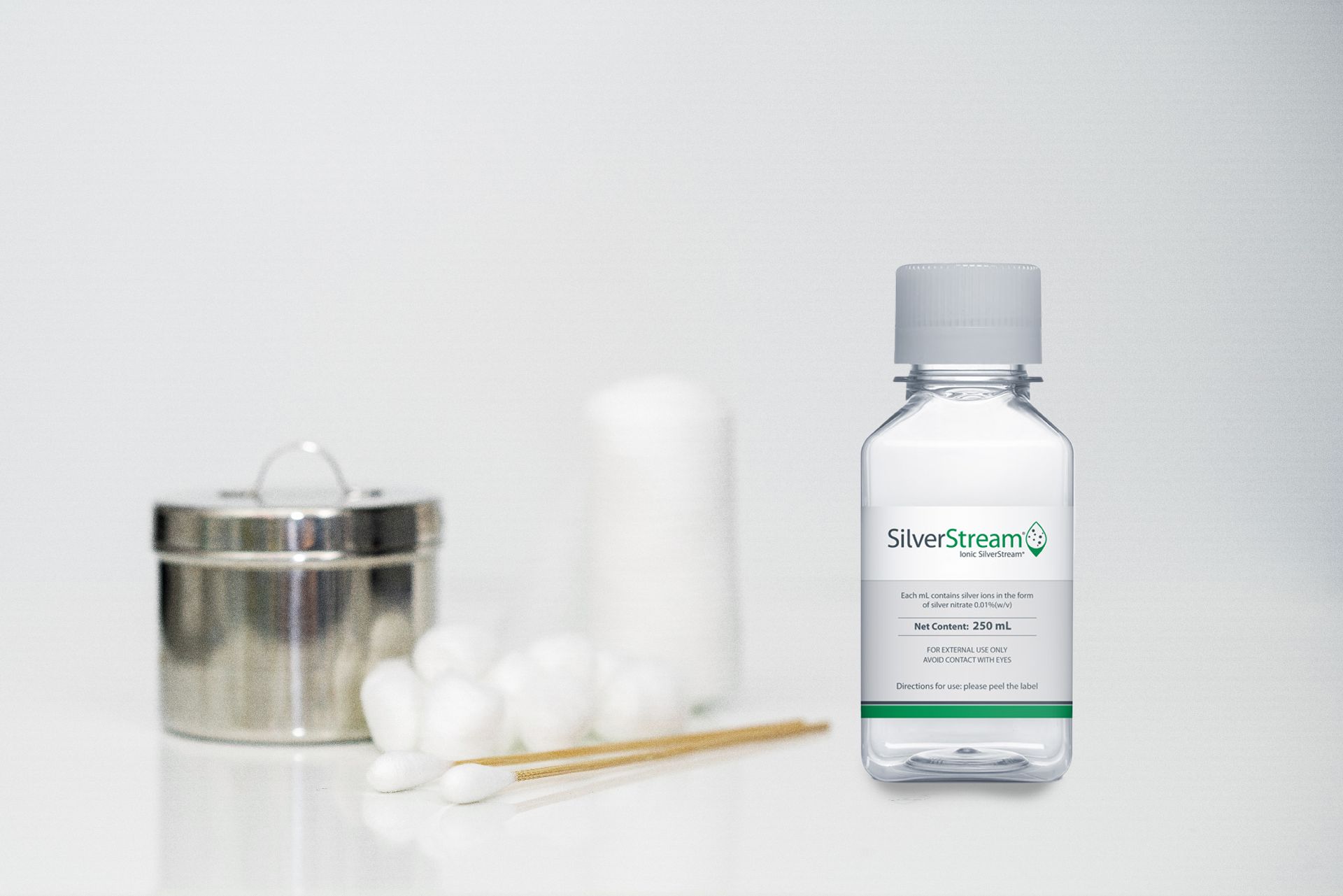
Case Series Study: Department of Emergency Medicine and Traumatology Wound Healing and Hyperbaric Medicine Center Hartford Hospital; Hartford, CT
Study Summary: SilverStream as an Effective Alternative to Surgical Debridement in Chronic Wounds
Background
Surgical debridement is often required for chronic wounds with stubborn slough tissue. While normal saline (NS) is widely used for irrigation, evidence suggests that advanced irrigation solutions like SilverStream (0.01% silver nitrate solution) can effectively reduce the need for surgical intervention.
Methods
- Participants: Four patients with chronic venous leg ulcers (VLUs) (average duration: 41 months, range: 9–97 months).
- Application of SilverStream:
- Each wound was irrigated with 35–50 cc of SilverStream using a 35 cc syringe.
- A gauze soaked in SilverStream was applied to the wound for 10 minutes prior to dressing changes.
- Frequency: Twice-weekly applications during outpatient visits.
- Outcome Measures: Wound size, presence of slough and granulation tissue, pain levels, and adverse events.
Results
- Reduction in Slough Tissue: All patients exhibited significant reductions in slough, translating into a decreased need for surgical debridement.
- Wound Area Reduction: Wound size decreased by an average of 47% (range: 25.9%–88.5%).
- Improved Healing: Increased granulation tissue was observed in all patients, indicating enhanced wound healing.
- Additional Benefits: Patients reported reduced wound odor, erythema, and pain, improving overall wound condition.
Discussion
SilverStream provided effective mechanical debridement, which reduced slough tissue and the dependency on sharp debridement. Its consistent irrigation and biofilm disruption capabilities proved essential in managing these chronic wounds.
Conclusion
SilverStream, when used as a wound irrigation agent, demonstrated a significant reduction in slough tissue and decreased the need for surgical debridement. This safe and efficient alternative to traditional methods underscores its potential to revolutionize wound management, particularly for chronic ulcers with biofilm and slough challenges.
Clinical Studies and Publications
Efficacy of a 0.01% Silver Nitrate Solution Used for Wound Irrigation
Ref: # 10
Author: Johnson-Arbor K
Department of Emergency Medicine and Traumatology Wound Healing and Hyperbaric Medicine Center Hartford Hospital; Hartford, CT
Poster presented at DFCon and SAWC Spring 2012


